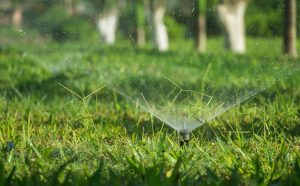What to Plant—and When—on the Montana Growing Calendar
Montana’s breathtaking landscapes come with a unique set of gardening challenges—short growing seasons, unpredictable frosts, and regional climate variations. Whether you’re planting vegetables, flowers, or native shrubs, knowing what to plant—and when—can make or break your success. At Horizon Landscape & Irrigation, we help homeowners work with nature by understanding the Montana growing calendar and planning accordingly.
If you’re new to landscaping or gardening in Big Sky Country, this seasonal guide can help you get the most from every square foot of your yard.
Understanding Montana’s Growing Zones
Montana includes USDA Hardiness Zones 3 to 5, with higher elevations and northern areas facing colder temps and shorter seasons. Most areas experience a final spring frost as late as mid-June and a first fall frost as early as mid-September, leaving a narrow window for tender plants. That’s why timing is everything.
Early Spring (March–April)
Tasks: Start seeds indoors, prep beds, prune trees and shrubs
As snow begins to melt and the ground thaws, early spring is the perfect time to plan and prepare. Start cool-weather vegetable seeds indoors—like broccoli, kale, and cabbage—about 6–8 weeks before your last expected frost. Prune fruit trees and shrubs while they’re still dormant, and begin prepping soil with compost or amendments.
What to plant:
Indoors: Tomatoes, peppers, broccoli, cabbage, and herbs
Outdoors (late April, in lower zones): Peas, spinach, onions, radishes
Late Spring (May–June)
Tasks: Transplant seedlings, plant annuals, sow warm-season crops
Once the danger of frost has passed (typically mid-June in most areas), it’s go time. Transplant your indoor seedlings and plant warm-weather crops directly in the garden. This is also a great time to install new perennials, ornamental grasses, and foundation shrubs.
What to plant:
Vegetables: Corn, squash, beans, tomatoes, cucumbers
Flowers: Marigolds, zinnias, petunias, cosmos
Perennials: Coneflowers, blanket flower, yarrow, and bee balm
Trees/Shrubs: Serviceberry, chokecherry, lilac
Summer (July–August)
Tasks: Maintain, irrigate, harvest
Summer in Montana often means heat and dry spells. Native plants typically handle these conditions well, but newer plantings need consistent watering. Use mulch to retain moisture and control weeds. Deadhead flowers to promote blooming and harvest vegetables regularly.
What to plant (early July):
Quick crops like lettuce, green beans, and radishes for a second harvest
Perennials and shrubs in cooler areas (early July is last call for planting)
Fall (September–October)
Tasks: Plant for next spring, cleanup, prep for winter
Fall is ideal for planting hardy perennials, trees, and bulbs. With cooler temps and more rainfall, plants can establish strong roots before winter sets in. It’s also time to clean up your garden, cut back perennials, and winterize irrigation systems.
What to plant:
Bulbs: Tulips, daffodils, allium (plant 6–8 weeks before ground freezes)
Perennials: Prairie smoke, blue flax, Idaho fescue
Lawns: Fall is a prime time for seeding cool-season grasses
Cover crops: For garden beds you want to enrich over winter
Winter (November–February)
Tasks: Plan, rest, and prep for next season
Montana winters are long, but they offer time to reflect and plan. Consider sketching out next season’s garden or consulting with Horizon Landscape on structural improvements like raised beds, irrigation systems, or new hardscaping elements.
Maximize Every Season with Horizon Landscape
Working with Montana’s unique climate doesn’t have to be complicated—it just takes the right timing and knowledge. Whether you’re revamping your landscape, planting a new garden, or building out your irrigation strategy, Horizon Landscape & Irrigation is here to help you get it right from the ground up.
Visit https://horizonlandscapemt.com to schedule a consultation or download a seasonal planting guide. Your perfect Montana yard starts with smart seasonal planning.




